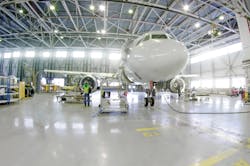Infrastructure needs for airside equipment electrification
FORT ATKINSON, Wisc., - The aviation industry is making significant strides towards reducing its environmental impact. One critical aspect of this effort is the electrification of airside equipment, including ground support vehicles, baggage handling systems and aircraft tugs, Joe Petrie writes for AviationPros. Continue reading original article.
The Military & Aerospace Electronics take:
7 June 2023 - Electrifying airside equipment requires robust power infrastructure to supply the necessary electricity. Airports need to assess and upgrade their electrical distribution systems to accommodate the increased demand for power. This may involve expanding capacity, installing additional transformers and upgrading power distribution networks. Conducting a thorough power assessment and collaborating with energy providers can ensure that airports have the required electrical capacity to support the electrification of airside equipment.
Airports need to establish a comprehensive charging infrastructure. This includes installing charging stations strategically throughout the airside areas, such as aircraft parking positions, maintenance areas and baggage handling facilities. Fast-charging stations capable of providing a quick charge during short turnaround times may be necessary for efficient operations. Implementing smart charging systems that optimize energy usage and load management can further enhance the effectiveness of the charging infrastructure.
Related: Safran selects Ansys for simulation as it designs next-gen aircraft engines
Related: Honeywell and WPI to study hydrogen storage and power generation for aviation
Jamie Whitney, Senior Editor
Military + Aerospace Electronics
